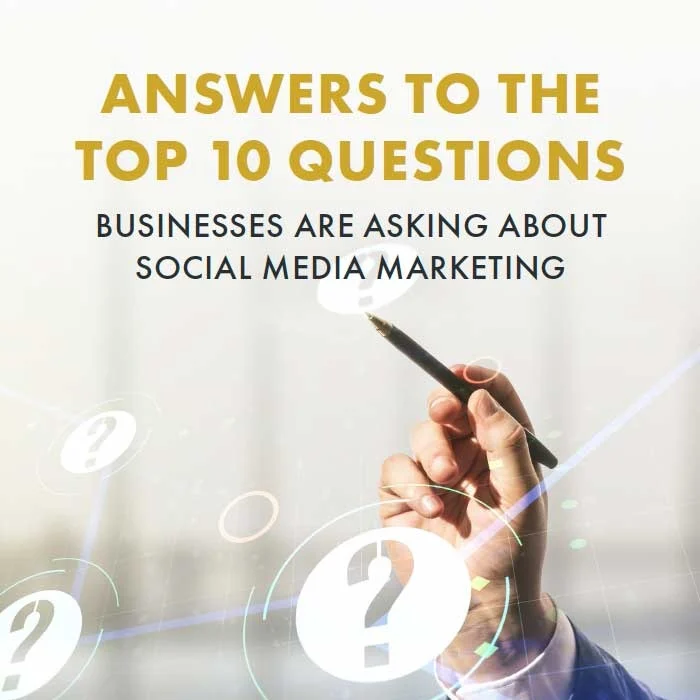
In a crowded digital space, standing out can be challenging. One great way to connect with your audience and increase conversions is by using emotional triggers in your marketing strategy. And no, that doesn't mean you have to cry on camera to evoke emotions :)
Let's dive into what emotional triggers are in digital marketing, and how you can use them to your advantage in digital marketing.
How Emotional Triggers Influence Decisions
When it comes to decision-making, emotions often take precedence over logic. Research shows that emotional reactions to marketing can be up to three times more powerful than the actual message itself. This implies that our emotional responses significantly influence our purchasing decisions, often more than we realize. By strategically using emotional triggers, marketers can craft campaigns that deeply resonate with their audience on a personal level, fostering a sense of connection and trust. This emotional engagement not only captures attention but also encourages customers to take action, whether it be making a purchase, signing up for a service, or sharing the message with others. Understanding the psychological impact of emotions in marketing can lead to more effective strategies and ultimately drive greater success.
The Connection Between Emotion and Memory
Emotion plays a pivotal role in human learning and memory formation. It has the power to influence our perception, attention, reasoning, problem-solving, and most importantly, memory. This is because emotion, whether positive or negative, commands our attention and motivates us. In marketing and advertising, understanding the effects of emotion on memory is highly beneficial. It enables marketers and business owners to design more engaging and memorable advertising campaigns.
In essence, emotion grabs our attention, prompts recall, and helps create more powerful memories than neutral experiences. Understanding this intrinsic connection between emotion and memory aids in creating effective advertising strategies that deeply resonate with consumers. Emotions — whether they are moods, feelings, affects, or drives — all contribute to the creation and retention of memories.
So, to optimize your advertising strategies, tapping into the emotional aspects of memory formation is essential. Advertisers can create more impactful and memorable campaigns by incorporating emotional content, which results in enhanced attention, perception, and memory among consumers.
Why Emotional Marketing Works
By leveraging the connection between emotion and memory, businesses can significantly improve the effectiveness of their marketing strategies. Emotional triggers work because they resonate with our inherent human experiences and needs. Whether it’s joy, fear, nostalgia, or a sense of belonging, emotions drive our decisions more than we realize. By creating content that evokes emotions marketers can forge deeper connections with their audience and build lasting relationships.
Example: Nara Smith’s TikTok Success
Nara Smith's TikTok videos are a perfect example of how emotional triggers can elevate digital content. She doesn’t just cook food; she creates a peaceful, inviting atmosphere that draws viewers in. Nara’s videos often show her cooking meals from scratch, which taps into feelings of nostalgia, warmth, and comfort. The slow, deliberate pace of her videos, combined with her soothing tone, makes viewers feel relaxed and connected.
This approach resonates deeply with her viewers, many of whom are looking for a moment of calm in their busy lives. By focusing on these emotional triggers, Nara has built a loyal following that eagerly anticipates her content.
How to Use Emotional Triggers in Your Digital Marketing
- Identify the Core Emotions: Start by considering what emotional response you want to elicit from your audience. Do you wish to make them feel excited about a new product, inspired by a success story, or reassured about their choices? Knowing the desired emotional outcome will guide you in crafting content that speaks directly to these feelings, ensuring that your message resonates on a deeper level.
- Create a Consistent Atmosphere: Consistency is key to reinforcing the emotional experience you aim to create. Ensure that every element of your content, from the visual design and color palette to the language and tone, aligns seamlessly with the targeted emotion. For example, calming colors and soothing language can build a reassuring atmosphere, while vibrant visuals and energetic words can generate excitement.
- Leverage Storytelling: Stories have a unique power to connect with audiences on an emotional level. Incorporate storytelling techniques to engage your audience deeply. Use relatable characters who face challenges and triumphs similar to those of your audience, and present real-life scenarios and narratives that evoke strong emotions. A well-told story can captivate and create a lasting emotional bond with your audience.
- Personalize Your Content: In today's digital age, personalization is crucial. Utilize data analytics to customize content to the specific needs, preferences, and emotional triggers of your audience. By crafting messages that speak directly to an individual's emotions, you're more likely to engage them effectively. Personalized interactions can foster a sense of connection and loyalty.
- Monitor and Adapt: The emotional impact of your content should be continuously assessed through metrics like engagement rates, shares, and customer feedback. These insights can provide valuable information about what resonates best with your audience. Be prepared to adjust your strategy based on this feedback, refining your approach to better meet the emotional needs of your audience over time.
- Language and Tone: The choice of language and tone is pivotal in triggering the desired emotions. For instance, using positive and uplifting language can instill a sense of joy and optimism, while urgent and assertive language might create a sense of urgency or fear. Carefully consider your word choices to ensure they align with the emotional response you intend to evoke.
The Ethical Considerations of Emotional Marketing
-
Balancing Emotion and Authenticity
While emotional marketing can be highly effective, it's essential to maintain authenticity. Avoid manipulating emotions or using fear tactics unethically. Instead, focus on genuine storytelling and building trust with your audience.
-
Respecting Audience Sensitivities
Not everyone’s going to react the same way to your content, so be careful not to offend or upset anyone. Think about your audience’s cultural and social context when you’re crafting emotionally charged content.
-
Transparency and Honesty
Maintain transparency and honesty in your emotional marketing efforts. Clearly communicate your intentions and ensure that your content aligns with your brand values. Authenticity and trust are key to building long-term emotional connections with your audience.
Crafting Authentic Connections with Emotional Marketing
Using emotional triggers in digital marketing is about more than just making people feel something; it’s about building real connections and loyalty with your audience. When marketers understand how emotions affect consumer behavior, they can create messages that truly resonate.
As you start this journey, keep in mind that the goal is to inspire and connect with your audience, not to manipulate them. By staying true to your brand's values and being authentic, you can turn your marketing from simple sales into meaningful interactions. Whether you’re a small business or a big company, using emotional triggers can help you stand out in a competitive market and build lasting relationships with your customers.



.webp)





















































